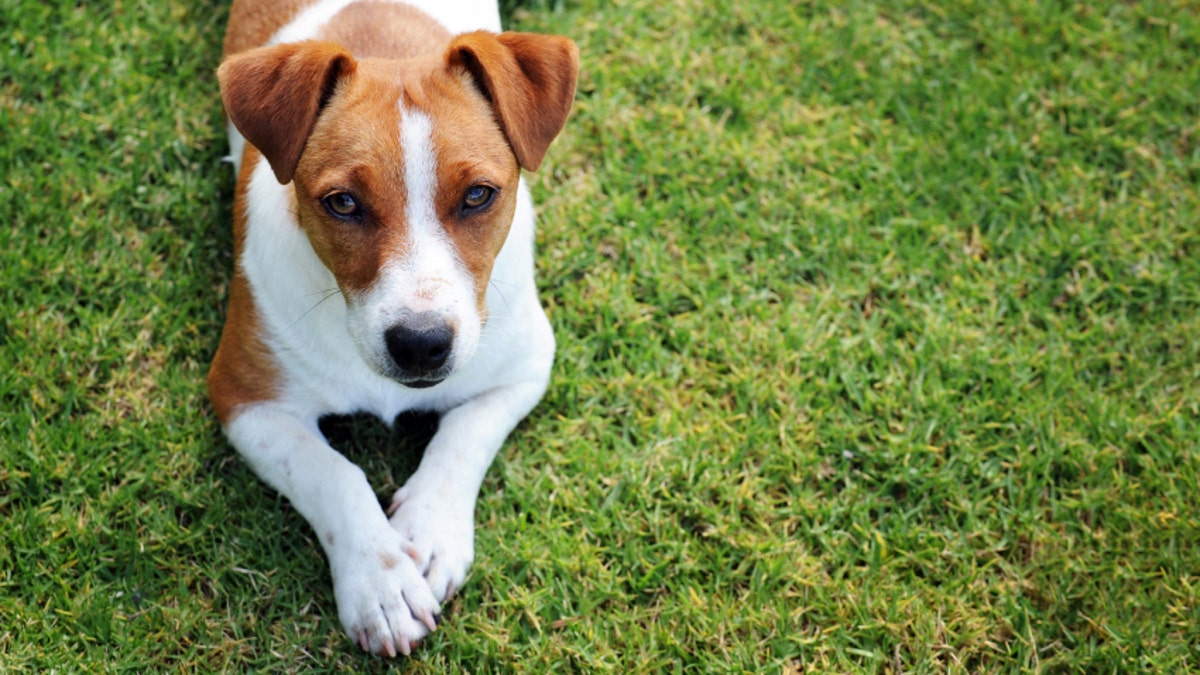
About two times a night, Shana Eppler wakes up to an alarm and slips into her daughter Abbie's room to test the 8-year-old's blood sugar.
Diagnosed with Type 1 diabetes at the age of 4, Abbie experiences low blood-sugar levels, a potentially dangerous condition known as hypoglycemia that can cause the loss of consciousness.
The alarm Ms. Eppler uses to avoid a health emergency is a furry one named Gracie, a 70-pound, 3-year-old British Labrador retriever trained to sniff out high and low blood-sugar levels. When Abbie's sugar level rises or falls below a certain target at night, Gracie rings a bell and Ms. Eppler gets up.
"The scenting part comes naturally," said Eppler, of Colorado Springs, Colo. "They are hunting blood sugars instead of ducks."
Diabetic, or hypoglycemic, "alert dogs" are a growing class of service dogs best known for guiding the visually impaired, sniffing out drugs and bombs, or providing mobility assistance for people with severe disabilities. Most recently, they have been trained to sniff out cancer and oncoming seizures. Toni Eames, president of International Association of Assistance Dog Partners, estimates there are over 30,000 assistance dogs working in the U.S., including dogs that have been trained by individuals.
The dog's accuracy and speed can beat medical devices, such as glucose meters and continuous glucose monitors, according to doctors, owners and trainers. With their acute sense of smell, the dogs—mostly retrievers—are able to react to a scent that researchers haven't yet identified.
For centuries, doctors diagnosed diabetes by identifying sweetness in the urine of a patient. That scent comes from glucose that isn't absorbed when a person lacks insulin, but the chemicals produced during low-blood-sugar incidents have yet to be identified.
"Whatever is being secreted in that drop in blood sugar…we just don't know what it is," said Dana Hardin, a pediatric endocrinologist who works for Eli Lilly & Co. in Indianapolis. Her goal is to identify what chemical compound the dogs smell, "not only to train dogs but to possibly make a device," she said.
Most of the interest in diabetic-alert dogs comes from people with Type 1 diabetes—and parents of children with Type 1—because they are more susceptible than people with Type 2 diabetes to serious problems of low blood sugar. Type 1 diabetes is an autoimmune disease characterized by the absence of insulin production, and requires daily insulin injections. People with Type 2, which is brought on by a combination of genetics, inactivity and obesity, have trouble processing insulin but don't necessarily require external insulin.
Incidence of Type 1 has been rising in the U.S. by about 2.5 percent to 4 percent a year for reasons scientists can't explain, according to several large-scale studies published in peer-reviewed medical journals. The number of people with Type 1 diabetes in the U.S. is between 1.3 million and 2.6 million, accounting for 5 percent to 10 percent of the total diabetic population.
Type 1 diabetics work to balance their daily intake of carbohydrates with external insulin. Prolonged high sugar levels can lead to complications such as heart disease, kidney failure and neuropathy. But trying to keep sugars at a low level raises the risk of hypoglycemia, which can be lethal, particularly if a patient loses consciousness while driving or alone.
Many people develop a condition known as hypoglycemia unawareness, meaning they no longer feel the hunger, listlessness and irritability that typically alerts diabetics that their blood-sugar level is falling.
"They don't get the signs. They just can be having a normal conversation, go from feeling fine to passing out," said Hardin.
Diabetics can use technologies such as continuous glucose monitors to help prevent these episodes, but these don't record blood-sugar drops until after they happen. So hypoglycemic-alert dogs can be lifesavers, said Hardin, who presented the first scientific research on the dogs at this year's annual American Diabetes Association conference in Philadelphia.
Using perspiration samples from patients whose sugars were below 65 milligrams a deciliter—normal is 80 to 120 mg/dL—she trained a two-year-old Labrador/Golden retriever mix to recognize low blood-sugar samples placed in blinded containers on a Lazy Susan-like wheel. Modeled after how police sniffing dogs are trained, trainers around the country use similar techniques. Hardin's dog was then paired with Dustin Hillman, a 36-year-old patient who suffered severe hypoglycemic unawareness.
Before he got the dog, Hillman lost consciousness due to hypoglycemia more than six times over the previous two weeks, requiring emergency services. In the three months after, the owner only lost consciousness once and never required emergency service, according to the study.
Since having Tippy—short for Tippecanoe—Hillman has finished his dissertation and will receive his Master's in Chemistry on Sunday from Purdue University. He had been on the verge of dropping out of school and moving back in with his parents, he said.
